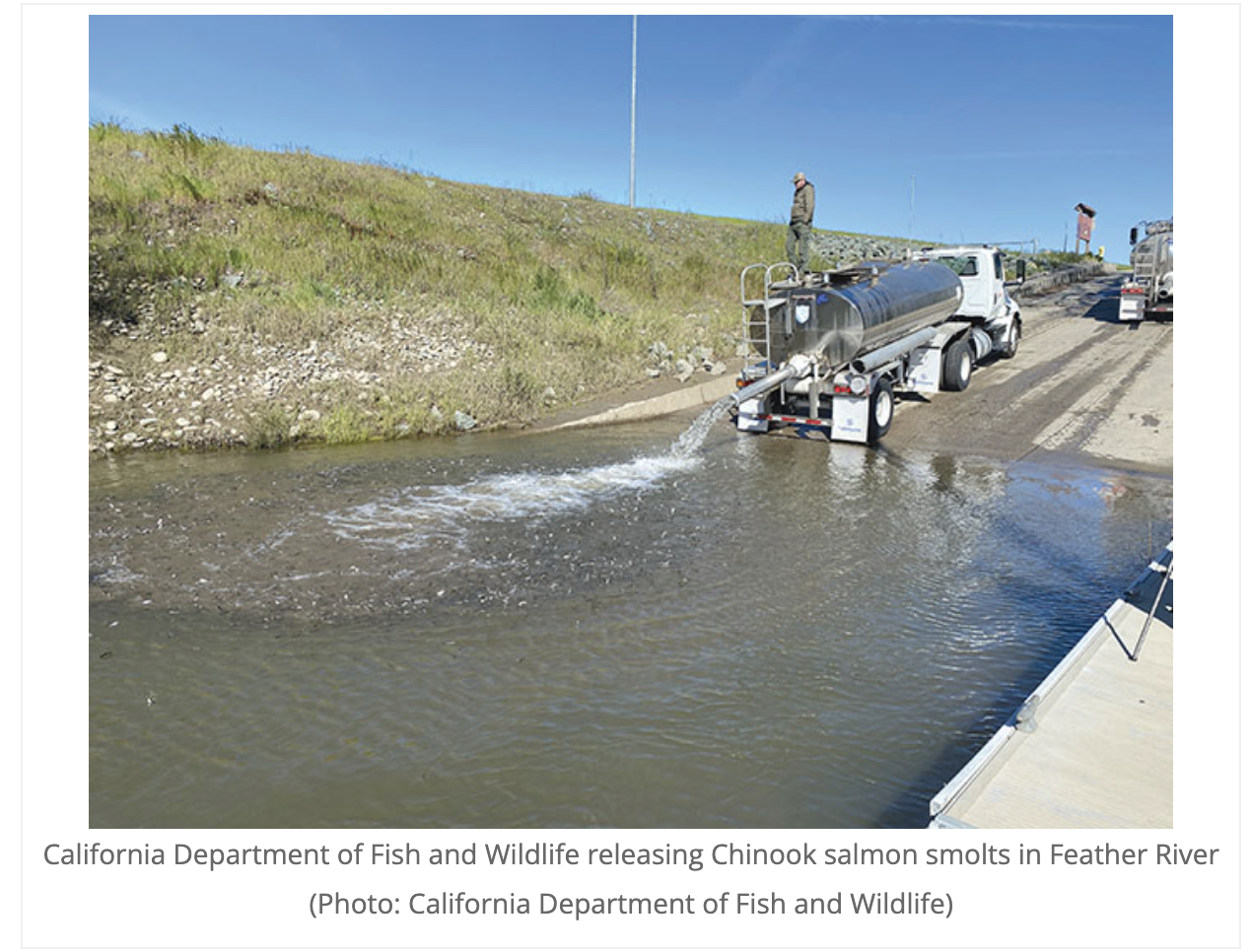Salmon Fishery 2025 Fishery Management Plan Development
*Note: NCGASA is providing a place for more information on salmon, but all of Cannon’s recommendations do not necessarily represent the views of our organization.
By Tom Cannon thomascannon0@gmail.com
Download the full report, CLICK HERE
This post describes a recommended approach for developing a 2025 Fishery Management Plan for California (FMP) with emphasis on salmon stocks of the Central Valley normally harvested in the nearby coastal ocean and in-land rivers, estuaries, and bays of the Central Valley. The proposed approach represents a change in the way the annual FMP is developed by the Pacific Fisheries Management Council and the State of California. The change suggested is not to replace the existing approach (see Guidelines attached below) but to add another layer of information review, analyses, and decision making to a process that has become over time more complicated and less reflective of changing ecosystem functions and cultural/economic paradigms. Hopefully the change will lead to consideration of a 2025 California Salmon Fishery that is protective of the public trust resources and socieo-economic values of the historic fishery.
Strategy/Approach
The proposed strategy is to develop an FMP that takes advantage of abundant hatchery salmon resources available in 2025 while protecting at-risk wild/natural runs found throughout the Valley watersheds. The goal is to define an FMP that focuses harvest on large productive hatchery stocks and minimize harvest of at-risk wild/natural stocks. The approach is to set rules that focus harvest in areas and times where the abundant hatchery stocks have high availability and at-risk stocks are least vulnerable. The approach entails a review of tag returns in time and space of each of the target stocks in the available code-wire-tag database (RMIS).
New SI Forecast
A new SI Forecast Parameter can be developed based on predicted catch of monthly returns of hatchery (and selected wild) cwt groups from Central Valley salmon hatcheries in coastal and in-land fisheries and escapement estimates. The cwt hatchery returns would serve as surrogates for risks of wild stocks to the fishery.
A new population forecast can be developed or each major Central Valley salmon stock. A Sacramento Index (SI) parameter would be the total of Sacramento River stock indices.
- Mokelumne River Index: broodyears 2021-23 hatchery cwt-release group production (returns estimated from past returns) and in-river production estimates for BY 2021-2023 for 2025. The fishable stock in 2025 would be the total of estimated returns from each Mokelumne Hatchery release group contributing to the 2025 fishable stock. This would include 3-year-old returns from BY 2022 release groups and 4 year olds from BY 2021 release groups. BY 2023 two-year-old (jacks) returns may be included. An estimate of BY 2021-2023 in-river returns for 2025 may be included.
- American River Index:
- Feather River Index:
- Battle Creek Coleman Index:
- Upper Sacramento River In-river and small tributary stock index:
- San Joaquin FRCS including Merced Hatchery and in-river FRCS from the mainstem and tributaries.
- SI = Total of #1 through #5 or #6.
- Winter Run Index:
- Spring Run Index:
Target Fisheries FMP
The cwt matrices of monthly catches by age groups would serve as risk of tag groups to fisheries. The matrices would provide information of where fishery effort should be most encouraged or discouraged by location and month. Water-year types and environmental conditions related to these patterns can be used to predict future possible conditions to guide in the development of FMPs. As seasons develop, FMPs can be adjusted/refined based on real-time adaptive management. For example, a marine heat wave in late summer 2024 might be considered in setting fall 2024 regulations (see Figure).
Tom Cannon is an estuarine fisheries ecologist and biostatistician and has been involved in Delta fishery issues for more than 35 years. Over that period, Tom has worked for or been a consultant to the California Department of Fish and Wildlife, U.S. Bureau of Reclamation, National Marine Fisheries Service, State Water Contractors, CalFed Bay-Delta Program, State Water Resources Control Board, PG&E, California Striped Bass Association, Fisheries Foundation and CSPA. He has been involved in numerous habitat restoration projects. Find his reports on https://calsport.org/fisheriesblog/








